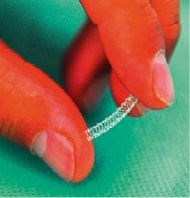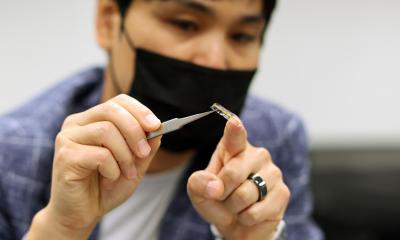Healing hearts 1
Bioresorbable stents
Cardiologists believe they can restore coronary arteries thanks to a new generation of stents that help the body to strengthen collapsed vessels. Elsewhere, patients’ own stem cells are being programmed to rebuild cardiac muscle in HF patients.

Not every patient needs to be cut open to replace or bypass clogged coronary arteries. Some 30 years ago we learned arteries could be reopened with a balloon in a minimally invasive procedure. More recently interventional cardiologists learned they could keep the artery open by inserting a metal tube.
Unfortunately, the body does not agree and fights this foreign object. Patients with metal stents face a risk of the artery closing again inside the tube. Thousands of patients today are being treated with an innovative stent made of biocompatible materials that holds the artery open long enough for the body to heal the vessel naturally, and then dissolves into the blood.
The results from clinical trials are so good that cardiologists are speaking for the first time about ‘healing’ coronary arteries. Dozens of these new stents are being pushed through product pipelines by companies specialising in cardiovascular technology.
In May of this year, at Europe’s largest gathering of interventional cardiologists, the combination of solid evidence from the clinic and new product announcements from companies reached what is called an inflection point, a moment when the tide turns.
‘We have reached the point of no return,’ said Patrick Serruys MD, stopping in his tracks on the way to speak at a scientific session devoted to these revolutionary devices, which he calls bioresorbable vascular scaffolds (BVS). The Editor-in-Chief of the journal EuroIntervention, and recognised as a co-developer of metal-based drug-eluting stents (DES), Dr Serruys has been preaching the need for this new technology.
‘Seven years! It’s like a biblical time to wait, but now it’s here,’ he said, clearly enthusiastic about the cascade of good news during the EuroPCR congress in Paris. ‘I will have to check, but I have the impression that bioresborbables were used in half the live sessions this week.’
‘We are calling it vessel restoration therapy (VRT),’ said Dr Serruys, a professor of Interventional Cardiology at Erasmus University (Rotterdam, the Netherlands), where he is also the Director of Clinical Research in the Catheterisation Laboratory. Bioresorbable scaffolds are revolutionary, disruptive for a coronary revascularisation market that is expected to reach $10 billion annually by 2016.
Because DES scaffolds are made of metal, no matter how thin, or how carefully coated with a therapeutic drug, they continue to irritate arterial tissue creating a risk of blockage, or restenosis. BVS are made with magnesium or various combinations of synthetic copolymers derived from amino acid l-tyrosine, such as polycarbonates and poly L-lactic acid (PLLA). Medical imaging studies show these bio-friendly materials hold their form reinforcing an arterial lesion for four to six months as the tissue repairs itself, and then they begin to degrade until absorbed by the body and almost completely disappear at 24 months.
Christoph Naber MD, from St. Elisabeth Hospital in Essen, Germany, said he has personally implanted 200 of the new scaffolds and colleagues at his hospital have used more than 400 each. ‘This is the first generation and we need to watch for any safety concerns, anything to show that this therapy is a problem,’ he said. ‘But, so far, with something like 10,000 devices implanted, there have been no signals of concern.’
A leading cardiac interventionalist, Dr Naber was a panelist for the Great Debate during EuroPCR and spoke for other panelists when he concluded, ‘the principle to treat and leave nothing behind is the way to go’. Co-chair of the Great Debate, Michael Haude, from the Städtische Kliniken in Neuss, Germany, noted that BVS are now moving out of simple lesions with more advanced designs. He also introduced a note of caution saying that, while safety data is proving to be ‘very good, we need long-term data to show these scaffolds have a superiority to the established standard of care, which remains new generation drug-eluting states (DES)’.
Doctors Naber and Haude both agreed with a conclusion during the Great Debate that DES will continue to be the predominant stent used, but that in 10 years it will be replaced by BVS as the standard of care. ‘Yes we all agreed with that in the discussion to be polite,’ Dr Naber told European Hospital, ‘but internally at my hospital, everyone believes it will be more like five years.’
Bioresorbable scaffolds are being developed by all major players, with Abbott Vascular the most advanced, but followed by major competitors Medtronic and Boston Scientific. Smaller companies introducing more novel devices include Kyoto Medical Planning (Japan), Biotronik (Germany), Elixir Medical (USA), Reva Medical (USA), Arterial Remodelling Technologies (France), Amaranth Medical (USA), OrbusNeich (Hong Kong), Huaan Biotechnology Group (Laiwu, China), and Xenogenics/MultiCell Technologies (USA).
30.08.2013











